#Command-line PHP Command-line PHP execution
Explore tagged Tumblr posts
Text
Exploring Essential Laravel Development Tools for Building Powerful Web Applications
Laravel has emerged as one of the most popular PHP frameworks, providing builders a sturdy and green platform for building net packages. Central to the fulfillment of Laravel tasks are the development tools that streamline the improvement process, decorate productiveness, and make certain code quality. In this article, we will delve into the best Laravel development tools that each developer should be acquainted with.
1 Composer: Composer is a dependency manager for PHP that allows you to declare the libraries your project relies upon on and manages them for you. Laravel itself relies closely on Composer for package deal management, making it an essential device for Laravel builders. With Composer, you may without problems upload, eliminate, or update applications, making sure that your Laravel project stays up-to-date with the present day dependencies.
2 Artisan: Artisan is the command-line interface blanketed with Laravel, presenting various helpful instructions for scaffolding, handling migrations, producing controllers, models, and plenty extra. Laravel builders leverage Artisan to automate repetitive tasks and streamline improvement workflows, thereby growing efficiency and productiveness.
3 Laravel Debugbar: Debugging is an crucial component of software program development, and Laravel Debugbar simplifies the debugging procedure by using supplying exact insights into the application's overall performance, queries, views, and greater. It's a accessible device for identifying and resolving problems all through improvement, making sure the clean functioning of your Laravel application.
4 Laravel Telescope: Similar to Laravel Debugbar, Laravel Telescope is a debugging assistant for Laravel programs, presenting actual-time insights into requests, exceptions, database queries, and greater. With its intuitive dashboard, developers can monitor the software's behavior, pick out performance bottlenecks, and optimize hence.
5 Laravel Mix: Laravel Mix offers a fluent API for outlining webpack build steps on your Laravel application. It simplifies asset compilation and preprocessing duties together with compiling SASS or LESS documents, concatenating and minifying JavaScript documents, and dealing with versioning. Laravel Mix significantly streamlines the frontend improvement procedure, permitting builders to attention on building notable consumer reviews.
6 Laravel Horizon: Laravel Horizon is a dashboard and configuration system for Laravel's Redis queue, imparting insights into process throughput, runtime metrics, and more. It enables builders to monitor and control queued jobs efficiently, ensuring most beneficial performance and scalability for Laravel programs that leverage history processing.
7 Laravel Envoyer: Laravel Envoyer is a deployment tool designed specifically for Laravel packages, facilitating seamless deployment workflows with 0 downtime. It automates the deployment process, from pushing code adjustments to more than one servers to executing deployment scripts, thereby minimizing the chance of errors and ensuring smooth deployments.
8 Laravel Dusk: Laravel Dusk is an cease-to-give up browser testing tool for Laravel applications, built on pinnacle of the ChromeDriver and WebDriverIO. It lets in builders to put in writing expressive and dependable browser assessments, making sure that critical user interactions and workflows function as expected across exceptional browsers and environments.
9 Laravel Valet: Laravel Valet gives a light-weight improvement surroundings for Laravel applications on macOS, offering seamless integration with equipment like MySQL, NGINX, and PHP. It simplifies the setup process, permitting developers to consciousness on writing code instead of configuring their development environment.
In end, mastering the vital Laravel development tools noted above is important for building robust, green, and scalable internet packages with Laravel. Whether it's handling dependencies, debugging troubles, optimizing overall performance, or streamlining deployment workflows, those equipment empower Laravel developers to supply outstanding answers that meet the demands of current internet development. Embracing these gear will certainly increase your Laravel improvement enjoy and accelerate your journey toward turning into a talented Laravel developer.
3 notes
·
View notes
Link
#Automation#cloud#configuration#containerization#deploy#DevOps#Docker#feedaggregator#FreshRSS#Linux#Monitoring#news#open-source#Performance#Privacy#RSSreader#self-hosted#Server#systemadministration#updates#webapplication
0 notes
Text
Why Global Companies Are Turning to India’s Official Laravel Partner
In recent years, India has emerged as a powerhouse for IT and software development services, with businesses across the globe seeking high-quality and cost-effective solutions. Among the various technologies gaining significant traction, Laravel, an open-source PHP framework, has proven to be a reliable and powerful option for developing modern web applications. As businesses strive to stay ahead of the competition, many have turned to India’s Official Laravel Partner Company to help them leverage the full potential of this robust framework.
In this blog, we’ll explore why global companies are increasingly choosing India’s Official Laravel Partner Company as their trusted development partner and why it is regarded as the best Official Laravel Partner Company in India.
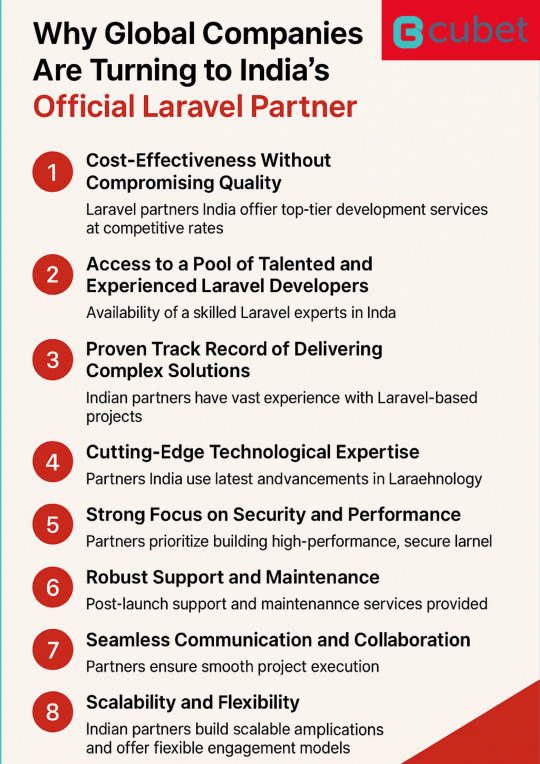
What is Laravel, and Why is It Important?
Before diving into the reasons behind the growing demand for Laravel Partner Companies in India, it’s important to understand what Laravel is and why it’s a preferred choice for developers.
Laravel is a PHP framework designed to make web application development easier and faster by offering elegant syntax, robust features, and built-in tools. Whether you’re developing simple websites or complex enterprise-level applications, Laravel streamlines the development process by providing:
1.MVC (Model-View-Controller) Architecture for organized coding
2. Blade Templating Engine for creating clean and customizable views
3. Artisan Command-Line Interface for automating repetitive tasks
4. Security Features like CSRF protection, hashing, and encryption
5. Database Migration Tools for database version control
Given its ease of use and scalability, Laravel is increasingly being adopted by businesses around the world for their web development projects. However, to unlock its full potential, it’s important to partner with an experienced Laravel development company that has the expertise to build cutting-edge solutions. This is where India’s Official Laravel Partner Companies come in.
Reasons Why Global Companies Are Turning to India’s Official Laravel Partner Companies
1. Cost-Effectiveness Without Compromising Quality
One of the key reasons global businesses are choosing Indian Laravel partners is the cost advantage that India offers. India is known for its highly skilled developers who are able to deliver exceptional work at a fraction of the cost compared to their counterparts in Western countries. With labor costs being much lower in India, companies can access top-tier development services without compromising on quality.
As the best Official Laravel Partner Company in India, Cubet offers cutting-edge Laravel development solutions at competitive rates, ensuring that businesses get the most value out of their investments.
2. Access to a Pool of Talented and Experienced Laravel Developers
India has one of the largest pools of skilled software developers in the world, including a vast number of experts proficient in Laravel development. Being an Official Laravel Partner Company in India, Cubet adheres to the highest standards and ensures that its developers are up to date with the latest advancements in the Laravel ecosystem. Whether you need an experienced Laravel developer or a team of experts, India has the talent and resources to meet your needs.
3. Proven Track Record of Delivering Complex Solutions
Global companies seek partners that can handle complex projects and deliver results on time and within budget. As India’s Official Laravel Partner Company, Cubet has a proven track record of successfully executing Laravel-based projects across various industries. From building scalable eCommerce platforms to creating secure financial applications, Cubet has extensive experience in handling diverse requirements and offering high-quality Laravel solutions.
The expertise and success of companies like Cubet make India the go-to destination for businesses looking to partner with the best Official Laravel Partner Company in India.
4. Cutting-Edge Technological Expertise
Laravel is a framework that evolves rapidly with regular updates and new features. Global companies need development partners who not only understand the latest version of Laravel but also have the ability to leverage its new features to their advantage. India’s Official Laravel Partner Companies stay on top of these updates and use the most recent versions of the framework to build scalable, secure, and innovative applications.
Cubet, as an Official Laravel Partner Company in India, offers cutting-edge development services, ensuring that global clients benefit from the latest advancements in Laravel technology.
5. Strong Focus on Security and Performance
For global businesses, security and performance are of utmost importance. Laravel provides a variety of built-in security features, including protection against SQL injection, cross-site request forgery (CSRF), and cross-site scripting (XSS). Moreover, Laravel’s efficient performance optimization tools ensure that applications run smoothly even under high traffic loads.
An Official Laravel Partner Company in India, like Cubet, ensures that security and performance are given top priority during the development process. This is why companies trust Indian partners for building high-performance, secure Laravel applications that can withstand the rigors of the modern business world.
6. Robust Support and Maintenance
After the development of the Laravel application, ongoing support and maintenance are essential for ensuring its long-term success. As an Official Laravel Partner Company in India, Cubet provides robust post-launch support and maintenance services, ensuring that clients’ applications remain up-to-date, secure, and optimized for performance.
This continuous support helps businesses maximize the return on investment and keep their applications running smoothly, which is a crucial aspect that global companies value when partnering with an Indian Laravel development company.
7. Seamless Communication and Collaboration
Working with a remote development team can be a challenge, especially when it comes to communication and collaboration. However, India has a strong culture of English proficiency, making it easier for global companies to communicate with their development partners. As an Official Laravel Partner Company in India, Cubet ensures seamless communication by providing dedicated project managers who act as a bridge between the client and the development team, ensuring smooth project execution.
8. Scalability and Flexibility
Businesses grow and evolve, and so do their technology needs. Laravel offers excellent scalability, making it ideal for businesses with long-term goals. India’s Official Laravel Partner Companies like Cubet can help businesses build scalable applications that grow with them.
With flexible engagement models, Cubet allows businesses to scale their development team up or down based on project needs. Whether you need a small team for an initial MVP or a large development team for a full-fledged enterprise application, India’s best Official Laravel Partner Company can accommodate your requirements.
Final Thoughts
India has rightfully earned its reputation as a hub for high-quality and cost-effective software development, especially in the field of Laravel development. Global companies are increasingly turning to India’s Official Laravel Partner Companies, like Cubet, to access top-notch Laravel development services that meet their business needs while staying within budget. With skilled professionals, extensive experience, and a commitment to delivering cutting-edge solutions, Indian Laravel partners are paving the way for businesses worldwide to achieve success.
If you’re looking for the best Official Laravel Partner Company in India to help you build robust and scalable web applications, Cubet is the ideal choice for your next project.
0 notes
Text
Laravel has been revolutionary in the world of PHP development, always looking to provide improved performance, security, and features that benefit developers, especially for Laravel development services New Jersey. Laravel 12 introduces even better updates to ease workflows and deliver an enhanced development experience. In this blog, we explore the new features, key updates, and why upgrading to Laravel 12 is essential for modern development needs.
Enhanced Performance and Optimization: Enhancements in performance have always been the focus of Laravel updates. Laravel 12 offers remarkable optimizations in query processing, caching mechanisms, and request handling to ensure applications execute faster and more efficiently.
Advanced Eloquent ORM Capabilities: Eloquent ORM has received several improvements, including better relationship handling, new query builder methods, and improved indexing support. These updates make database interactions smoother and more intuitive.
Upgraded Routing System: The routing system in Laravel 12 has been refined for better efficiency, reducing unnecessary middleware overhead and offering a more streamlined approach to defining routes. This change enhances API response times and improves application scalability.
Advanced Security Features: Security is never a major issue, and Laravel 12 comes with tougher authentication measures, better token handling for API authentication, and bolstered XSS and CSRF protection for increased security compliance.
Blade Template Enhancements: Blade templating engine in Laravel 12 now comes with added directives and enhanced condition and loop handling, giving developers an easy time handling dynamic content in views.
Native Support for WebSockets: Laravel 12 now provides native support for WebSockets, which makes it possible to achieve real-time communication for apps like chat apps, notifications, and live data streaming.
New Artisan Console Commands: Artisan, the command-line interface provided by Laravel, has been refreshed with new commands and flags to streamline development and debugging. The enhanced CLI experience reduces the time consumed by developers and automates multiple mundane tasks.
Enhanced Queue Management: Queue handling has also been optimized for more efficient job processing, improved monitoring and debugging capabilities. Laravel 12 provides native support for priority-based execution of jobs as well.
Improved Testing Support: Laravel 12 enhances testing through improved support for PHPUnit and Pest. It also provides more user-friendly mechanisms to deal with database transactions and API endpoint testing.
Should You Use Laravel 12?
Laravel 12 upgrade is a good decision for developers and companies seeking enhanced security, better performance, and a general richer development experience. Here’s why you should make the upgrade:
Improved Performance: Refactored queries, routing, and caching result in quicker applications.
Improved Security: New protection and authentication features offer enhanced security against attacks.
Simplified Development: New Blade directives, refined Artisan commands, and the improved Eloquent ORM make development easier.
Real-Time Features: Native WebSocket support allows for real-time functionality without relying on third-party plugins.
Long-Term Support: Being up-to-date with the current version means continued support and bug fixes.
How to Upgrade to Laravel 12?
If you are currently using an older Laravel version, upgrading to Laravel 12 is a straightforward process. Follow these steps:
Backup Your Project: Before making any changes, always create a complete backup of your project, including the database.
Check System Requirements: Ensure your server meets Laravel 12’s requirements. Update PHP and other dependencies if necessary.
Update Composer: Run the following command to update your Laravel installation: composer update
Review and Fix Deprecated Features: Check Laravel’s upgrade guide to identify deprecated features and make necessary adjustments in your code.
Run Migrations and Tests: After upgrading, run database migrations and test your application to ensure everything is functioning as expected.
Conclusion
Laravel 12 brings a host of new features, performance improvements, and security enhancements, making it a must-have upgrade for Laravel developers. Whether you are working on a new project or maintaining an existing one, upgrading to Laravel 12 will help you build robust, scalable, and secure applications more efficiently, especially for Laravel web application development. Stay ahead in the development game by leveraging the latest advancements in Laravel and exploring the powerful Laravel 12 new features!
#Laravel web application development#Laravel development services new jersey#Laravel 12 new features
0 notes
Text
Securing PHP applications: Advanced techniques for preventing common vulnerabilities

This article delves into advanced security practices for PHP applications, focusing on input validation, CSRF protection, and secure session management to mitigate common vulnerabilities and enhance application security.Discover how to fortify your PHP applications against common threats with advanced security techniques.Introduction to PHP Application Security In the digital age, securing web applications is paramount, especially for those built with PHP, a language that powers a significant portion of the web. PHP applications are often targeted by attackers due to their widespread use and the potential vulnerabilities that can arise from improper coding practices. This article explores advanced techniques to safeguard PHP applications, focusing on three critical areas: input validation, CSRF protection, and secure session management. Input Validation: The First Line of Defense Input validation is crucial in preventing a wide array of attacks, including SQL injection, XSS (Cross-Site Scripting), and command injection. By ensuring that only properly formatted data is processed by your application, you can significantly reduce the risk of these vulnerabilities. PHP offers several functions and filters for input validation, such as filter_var() and htmlspecialchars(), which can be used to sanitize user inputs effectively. For example, to prevent SQL injection, always use prepared statements with parameterized queries. Here's a simple example using PDO (PHP Data Objects): $stmt = $pdo->prepare('SELECT * FROM users WHERE email = :email'); $stmt->execute(); $user = $stmt->fetch(); This approach ensures that the input is treated as a parameter and not as part of the SQL command, thereby preventing attackers from injecting malicious SQL code. CSRF Protection: Safeguarding Against Unauthorized Actions Cross-Site Request Forgery (CSRF) is an attack that tricks the victim into submitting a malicious request. It exploits the trust that a site has in the user's browser. To prevent CSRF attacks, it's essential to implement anti-CSRF tokens. These tokens are unique, secret, and unpredictable values that are generated by the server-side application and embedded within forms. When the form is submitted, the server verifies the token to ensure the request is legitimate. Here's how you can implement a basic CSRF token mechanism in PHP: session_start(); if (empty($_SESSION)) { $_SESSION = bin2hex(random_bytes(32)); } $csrf_token = $_SESSION; Include this token in your forms as a hidden field and validate it upon form submission to protect against CSRF attacks. Secure Session Management: Keeping User Data Safe Session management is another critical aspect of PHP application security. Poor session handling can lead to session hijacking and fixation attacks. To enhance session security, always regenerate the session ID after a successful login and use secure, HttpOnly cookies to store session IDs. Additionally, implement session expiration and enforce HTTPS to encrypt data in transit. Here’s an example of secure session handling in PHP: session_start(); if (!isset($_SESSION)) { session_regenerate_id(true); $_SESSION = true; } This code regenerates the session ID to prevent session fixation and marks the session as initiated to avoid unnecessary regeneration. Conclusion Securing PHP applications requires a comprehensive approach that addresses various potential vulnerabilities. By implementing robust input validation, CSRF protection, and secure session management, developers can significantly enhance the security of their applications. It's crucial for developers to stay updated with the latest security practices and continuously audit their code for potential vulnerabilities. Remember, security is not a one-time task but an ongoing process. Read the full article
0 notes
Text
I have wrestled for a long while with a problem that has plagued many people. Just witness the number of postings with problems about how to run CRON on this or that web host system. Does the system allow wget or lynx? Does it support running PHP from the cron tab in cpanel? You have to run cron from a browser, need to use \\\\\\\'curl\\\\\\\' and what does that mean? A classic error that is seen in the confirmation email (if cron sends you results via email) is: Warning: include_once(./includes/bootstrap.inc): failed to open stream: No such file or directory in /home/SiteNameHere/public_html/drupal/cron.php on line 9 So, at least if you are hosted by www.lunarpages.com (LP), here is the definitive answer including how to run cron for multi-site installations. LP does NOT support either wget or lynx and running PHP on the cron command line will not properly invoke the cron.php. LP supports curl (a/k/a cURL). Some examples of commands that work: curl --silent --compressed curl http://sub.site.com/cron.php > /dev/null 2>&1 (this will trigger the sub-site silently) curl --silent --compressed curl http://site.com/cron.php > /dev/null 2>&1 (for a single site installation) The \\\\\\\' > /dev/null 2>&1\\\\\\\' part suppresses sending you an email for each execution. So, enter cpanel, click on the CRON icon, and using either the simple or the advanced mode, those are the commands that work. Hope this helps someone.
https://www.google.com I have wrestled for a long while with a problem that has plagued many people. Just witness the number of postings with problems about how to run CRON on this or that web host system. Does the system allow wget or lynx? Does it support running PHP from the cron tab in cpanel? You have to run cron from a browser, need to use \\\'curl\\\' and what does that mean? A classic error that is seen in the confirmation email (if cron sends you results via email) is: Warning: include_once(./includes/bootstrap.inc): failed to open stream: No such file or directory in /home/SiteNameHere/public_html/drupal/cron.php on line 9 So, at least if you are hosted by www.lunarpages.com (LP), here is the definitive answer including how to run cron for multi-site installations. LP does NOT support either wget or lynx and running PHP on the cron command line will not properly invoke the cron.php. LP supports curl (a/k/a cURL). Some examples of commands that work: curl --silent --compressed curl http://sub.site.com/cron.php > /dev/null 2>&1 (this will trigger the sub-site silently) curl --silent --compressed curl http://site.com/cron.php > /dev/null 2>&1 (for a single site installation) The \\\' > /dev/null 2>&1\\\' part suppresses sending you an email for each execution. So, enter cpanel, click on the CRON icon, and using either the simple or the advanced mode, those are the commands that work. Hope this helps someone.
0 notes
Text

How To Get Started With Laravel? — A Beginner’s Guide By Sohojware
Laravel, a free, open-source PHP web framework, has become popular worldwide for web developers. Laravel streamlines development by providing a robust foundation for building modern web applications. This comprehensive guide from Sohojware, a leading US-based software development company, will equip you with the essential knowledge to embark on your Laravel development journey.
Why Choose Laravel?
There are many reasons why Laravel stands out in the world of web frameworks. Here are a few key benefits:
Elegant MVC Architecture: Laravel enforces the Model-View-Controller (MVC) design pattern, promoting clean code separation and maintainability. This structure makes your code easier to understand, test, and scale as your application grows.
Object-Oriented Approach: Built on top of PHP’s object-oriented capabilities, Laravel fosters code reusability and promotes a well-organized development workflow.
Built-in Features: Laravel comes packed with a plethora of pre-built functionalities, including authentication, authorization, routing, caching, database management, and more. This saves you time and effort by eliminating the need to develop these features from scratch.
Artisan CLI Tool: Laravel’s powerful command-line interface (CLI) tool, Artisan, simplifies common development tasks like generating models, migrations, controllers, and other boilerplate code. This speeds up development significantly.
Active Community and Ecosystem: Laravel boasts a large and active community of developers who contribute to its continuous improvement. This ensures access to extensive documentation, tutorials, and readily available packages for various functionalities.
Getting Started with Laravel
Now that you’re convinced about the advantages of Laravel, let’s delve into the steps to get you started:
1. Prerequisites:
Before diving into Laravel development, ensure you have the following tools installed on your system:
PHP (version 7.4 or later): Download and install the latest version of PHP from the official website (https://www.php.net/downloads/).
Composer: Composer is a dependency manager for PHP. Follow the installation instructions on the Composer website (https://getcomposer.org/).
2. Install Laravel:
There are two primary methods for installing Laravel:
Method 1: Using Composer:
Open your terminal and navigate to your desired project directory. Then, run the following command:
Bash

Replace “your-project-name” with your preferred application name. This command will create a new Laravel project directory with all its dependencies installed.
Method 2: Using Laravel Installer:
If you don’t have Composer installed, you can download the Laravel installer from the official website ([invalid URL removed]). Once downloaded, execute the following command in your terminal:
Bash

3. Set Up Database:
Laravel utilizes a database to store application data. You can choose from various database management systems like MySQL, PostgreSQL, or SQLite. Configure your database credentials in the .env file located at the root of your project directory.
4. Start the Development Server:
Laravel provides a built-in development server to run your application locally. Navigate to your project directory in the terminal and execute the following command to start the server:
Bash
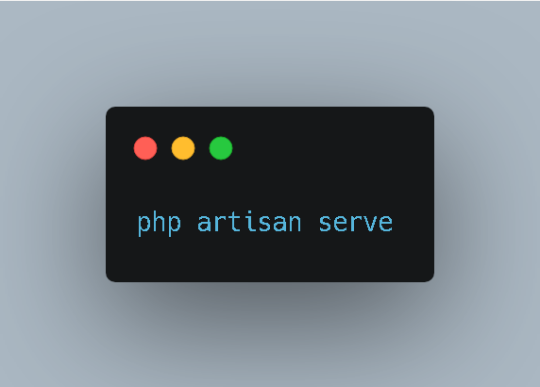
This will typically launch your application at http://localhost:8000 in your web browser.
5. Explore the Project Structure:
Laravel adheres to a well-defined directory structure, making locating and managing different application components easy. Take some time to familiarize yourself with the key directories like app, config, public, resources, and routes, each serving specific functionalities.
Building Your First Laravel Application
Now that you have a basic Laravel setup, let’s create a simple application to demonstrate its functionalities. We’ll build a basic blog system where users can view a list of posts.
1. Create a Model:
A model represents the data structure of your application. To create a model for posts, run the following Artisan command in your terminal:
Bash
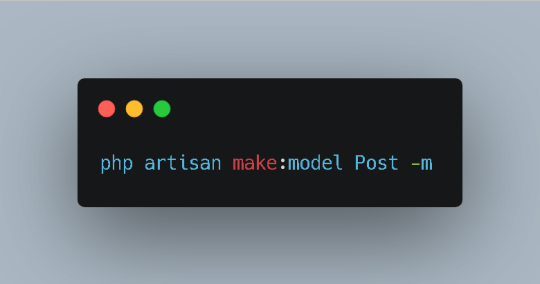
This command generates a Post.php file within the app directory. Modify this file to define the attributes associated with a post, such as title, content, and author.
2. Create a Migration:
A migration is a version control system for your database. It allows you to define changes to your database schema and easily roll them back if necessary. To create a migration for the Post model, run the following Artisan command:
Bash
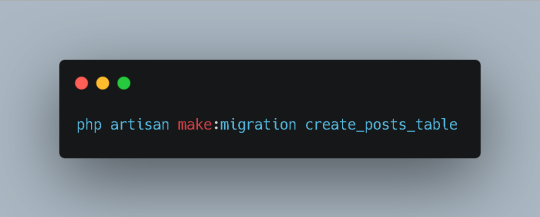
This will generate a new migration file within the database/migrations directory. Open the file and add the necessary columns to the up method. For example:
PhP
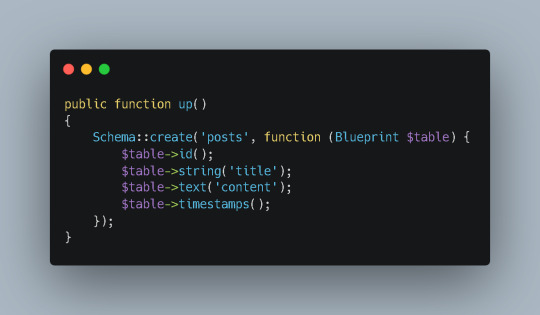
3. Run the Migration:
To apply the changes defined in the migration to your database, run the following command:
Bash
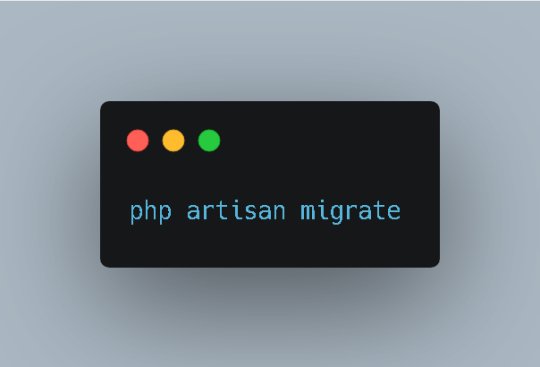
This will create the posts table in your database.
4. Create a Controller:
A controller handles user requests and interacts with your models. To create a controller for managing posts, run the following Artisan command:
Bash

This will generate a PostController.php file within the app/Http/Controllers directory. Inside the controller, define methods to handle different actions, such as displaying a list of posts, creating a new post, and editing or deleting existing posts.
5. Define Routes:
Routes map URLs to specific controller actions. To define routes for your blog application, open the routes/web.php file and add the following code:
Php

This route will map the root URL (http://localhost:8000) to the index method of the PostController class.
6. Create a View:
Views are responsible for rendering HTML content. To create a view for displaying the list of posts, run the following Artisan command:
Bash
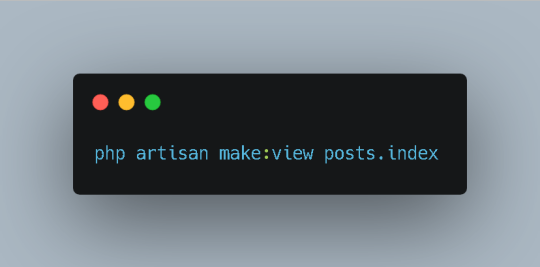
This will generate a posts/index.blade.php file within the resources/views directory. Inside the view, write the HTML code to display the list of posts.
7. Complete the Controller:
In the index method of the PostController, retrieve the list of posts from the database using the Post model and pass it to the view:
PhP

8. Test Your Application:
Access http://localhost:8000 in your web browser to see the list of posts displayed on the page.
Conclusion
This guide has provided you with a solid foundation for getting started with Laravel. By following these steps and exploring the framework’s rich features, you can efficiently build robust and scalable web applications. Remember, practice is key to mastering Laravel. Start experimenting with different features and building your own projects to enhance your skills.
FAQs
What is the difference between Laravel and CodeIgniter?
Laravel and CodeIgniter are both popular PHP frameworks, but they have distinct approaches and features. Laravel emphasizes convention over configuration and provides a more expressive syntax, while CodeIgniter offers a more lightweight and flexible structure. The choice between the two often depends on project requirements and developer preferences.
Can I use Laravel for large-scale applications?
Absolutely! Laravel is designed to handle complex and high-traffic applications. Its robust architecture, scalability features, and active community support make it a suitable choice for enterprise-level projects.
How does Laravel compare to other popular frameworks like Symfony and Yii?
Laravel, Symfony, and Yii are all powerful PHP frameworks with their own strengths and weaknesses. Laravel is known for its ease of use and expressive syntax, Symfony offers a more modular and customizable approach, and Yii emphasizes performance and efficiency. The best framework for your project depends on your specific needs and preferences.
Does Sohojware offer Laravel development services?
Yes, Sohojware provides professional Laravel development services. Our team of experienced developers can help you build custom Laravel applications tailored to your business requirements.
How can I learn Laravel more effectively?
The best way to learn Laravel is through hands-on practice and experimentation. Start by following tutorials and building small projects. As you gain confidence, gradually tackle more complex applications. Additionally, consider joining online communities and forums where you can connect with other Laravel developers and seek help when needed.
1 note
·
View note
Text
Laravel Development | Espirevox
Laravel Development: Powering Modern Web Applications
Laravel has established itself as a leading framework for PHP development, transforming how developers build web applications. Its robust architecture, elegant syntax, and rich feature set make it a popular choice for creating dynamic, scalable, and secure applications.
Why Choose Laravel?
Elegant Syntax and Developer Experience: Laravel’s syntax is designed to be expressive and readable, simplifying complex coding tasks. This clean, elegant syntax enhances developer productivity and reduces the learning curve for new developers.
MVC Architecture: Laravel follows the Model-View-Controller (MVC) design pattern, which separates application logic from user interface elements. This separation improves code organization and maintainability, making it easier to manage and scale projects.
Built-in Authentication and Security: Laravel provides built-in authentication systems and security features. With tools like Laravel Passport for API authentication and robust protection against common vulnerabilities, it ensures that applications are secure by default.
Powerful ORM - Eloquent: Laravel’s Eloquent ORM (Object-Relational Mapping) simplifies database interactions. It allows developers to work with database records as PHP objects, making CRUD (Create, Read, Update, Delete) operations straightforward and efficient.
Artisan Command Line Interface: The Artisan CLI is a powerful tool for automating repetitive tasks. From database migrations to seeding and testing, Artisan streamlines many aspects of development, saving time and reducing manual effort.
Comprehensive Ecosystem: Laravel boasts a rich ecosystem with tools like Laravel Forge, Envoyer, and Nova. These tools facilitate server management, deployment, and administration, enhancing the overall development and maintenance experience.
Testing and Debugging: Laravel integrates PHPUnit for automated testing, enabling developers to write and execute tests easily. This focus on testing helps ensure code quality and reliability throughout the development cycle.
Modular and Extensible: Laravel’s modular architecture allows for easy extension and customization. With support for packages and a vibrant community contributing to Laravel’s ecosystem, developers can leverage existing solutions or create new ones tailored to their needs.
Community and Support: Laravel has a large, active community that contributes to its continuous improvement. With extensive documentation, forums, and a wealth of online resources, developers can easily find support and guidance.
Conclusion
Laravel is more than just a PHP framework; it’s a comprehensive development platform that empowers developers to build sophisticated web applications with ease. Its combination of elegant syntax, powerful features, and strong community support makes it an excellent choice for modern web development. Whether you’re developing a small project or a large-scale application, Laravel’s robust capabilities and developer-friendly approach position it as a leading choice in the web development landscape.
0 notes
Video
youtube
How to Install Webmin and Virtualmin on Linux Servers
# About Webmin Webmin is a web-based system configuration tool for Unix-like systems, including Linux. It provides a graphical interface that allows administrators to manage various aspects of their server, such as: • User accounts • Disk quotas • Services • Configuration files • Hardware devices • Software package management • System logs By using Webmin, administrators can perform complex tasks without needing to manually edit configuration files or use command-line interfaces, making server management more accessible and efficient.
# About Virtualmin Virtualmin is a powerful and flexible web hosting control panel built on top of Webmin. It is designed for managing multiple virtual hosts through a single interface and is suitable for both shared and dedicated hosting environments. Key features of Virtualmin include: • Management of multiple domains and websites • Mail server configuration and management • Database management (MySQL/PostgreSQL) • DNS server management • Security enhancements and monitoring • Backup and restore functionalities • Support for multiple PHP versions • Integration with popular web applications Virtualmin simplifies the process of managing web hosting environments, providing tools for administrators to efficiently handle various hosting-related tasks. Purpose of the Tutorial Video: In this tutorial video, we will walk you through the process of installing Virtualmin on a Debian 12 server. By the end of this video, you will have a fully functional Virtualmin setup, ready to manage your web hosting environment with ease. This tutorial covers: 1. Preparing your Debian 12 system for installation. 2. Downloading and executing the Virtualmin installation script. 3. Completing the initial configuration and post-installation setup. 4. Accessing and navigating the Virtualmin web interface. Whether you're new to server management or looking for an easier way to handle your hosting needs, this tutorial will guide you step-by-step to get Virtualmin up and running smoothly.
In this tutorial we will install Webmin + Virtualmin on a Linux Debian 12 server and log into its panel. The commands used in this tutorial go below.
# Log into the server via SSH ssh root@SERVER_IP
# Update and upgrade the system apt update && apt upgrade -y
# Install the required packages apt install wget curl
# Download the installer wget https://software.virtualmin.com/gpl/scripts/install.sh
# Make the installer executable chmod +x install.sh
# Run the installer ./install.sh
# Then you can log into the panel by calling the server IP address or panel URL on port 10000. Ex: https://10.10.10.10:10000
All Open Source!
Arashtad provides high quality tutorials, eBooks, articles and documents, design and development services, over 400 free online tools, frameworks, CMS, WordPress plugins, Joomla extensions, and other products.
More Courses ▶ https://tuts.arashtad.com/
Business Inquiries ▶ https://arashtad.com/business-inquiries/ Affiliate Programs ▶ https://arashtad.com/affiliate-programs/
eBooks ▶ https://press.arashtad.com/ Our Products ▶ https://market.arashtad.com/ Our Services ▶ https://arashtad.com/services/ Our Portfolio ▶ https://demo.arashtad.com/ Free Online Tools ▶ https://tools.arashtad.com/ Our Blog ▶ https://blog.arashtad.com/ Documents ▶ https://doc.arashtad.com/ Licensing ▶ https://arashtad.com/licensing/ About us ▶ https://arashtad.com/about/
Join Arashtad Network ▶ https://i.arashtad.com/
Our Social Profiles ▶ https://arashtad.com/arashtad-social-media-profiles/ Vimeo ▶ https://vimeo.com/arashtad Udemy ▶ https://www.udemy.com/user/arashtad GitHub ▶ https://github.com/arashtad Linkedin ▶ https://www.linkedin.com/company/arashtad Twitter ▶ https://twitter.com/arashtad
#youtube#webmin#virtulmin#linux#debian#virtualmin install#webmin install#virtualmin tutorial#webmin tutorial
0 notes
Text
Laravel vs. The Competition: What Sets it Apart in Web Development

Laravel has gained popularity as one of the most favourable PHP frameworks, admired by developers for its elegance, ease of use, and powerful features. Developed by Taylor Otwell, it is a free and open-source PHP web application framework that adopts the Model-View-Controller (MVC) architectural pattern.
As per the recent data, there are approximately 757,533 live websites which are using Laravel. This blog discusses what differentiates Laravel from other frameworks and why it has become the preferred choice for many companies and developers.
Laravel: A Brief Overview
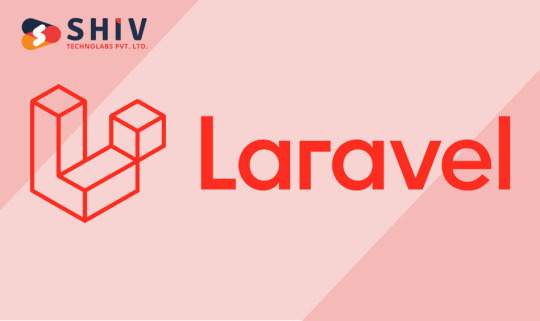
Laravel is built on several Symfony components which serve as a well-tested, stable base of code. This base enables Laravel to offer advanced features while preserving high performance. The framework aims to ease the development process by handling common tasks typically involved in web projects, such as authentication, routing, sessions and caching.
As more businesses recognize the value of Laravel, the demand for Laravel development services has grown exponentially. These services can greatly improve your web development projects by using the framework capabilities, best practices, and industry experience.
Key Features that Set Laravel Apart
Eloquent ORM (Object-Relational Mapping)
Eloquent ORM is the built-in ORM of Laravel and is considered one of the most advanced ORM implementations in PHP. It enables developers to work with database objects and their relationships using simple, easy-to-understand language. This simplifies the code as well as eliminates the requirement for manual SQL queries, with the guarantee that data access is secure and efficient.
Artisan Console
Artisan is a command-line interface of Laravel built into the framework itself. It offers a wide range of useful commands for building a Laravel app.
Artisan provides the ability to automate those tedious, repetitive tasks which are normally manual and non-productive. It is also able to generate template code for new controllers, models and migrations, which can then be modified to fit specific needs, hence accelerating the entire process of development.
Template Engine (Blade)
Laravel’s Blade templating engine is incredibly flexible and powerful, yet it allows developers to use plain PHP code in the templates. Unlike many PHP templating engines, Blade does not restrict you from using code in views, making it possible to implement complex data operations right within the template, while still keeping the syntax clean and readable.
Security
Laravel provides a robust security framework that is fundamental to the development of web applications. It has built-in protections against common threats such as SQL injection, cross-site scripting (XSS), and cross-site request forgery (CSRF). Laravel uses hashed passwords, meaning the actual password is never stored in the database, just a secure hash of it.
Libraries & Modular
Laravel comes with pre-built libraries and modules that make it easier to enhance an application's capabilities without building features from scratch. One of the standout libraries is the Authentication library, which is easy to implement and can be customized to meet specific needs, providing a ready-to-use way to integrate secure authentication methods into applications.
Automated Task Scheduling
Laravel's command scheduler allows the programmatic scheduling of periodically executed tasks. Traditionally, developers have had to generate a Cron entry for each task they need to be scheduled. Laravel simplifies this with a fluent, expressive interface to define command schedules within Laravel itself, making it easier to manage tasks directly through the framework.
Laravel vs. The Competition
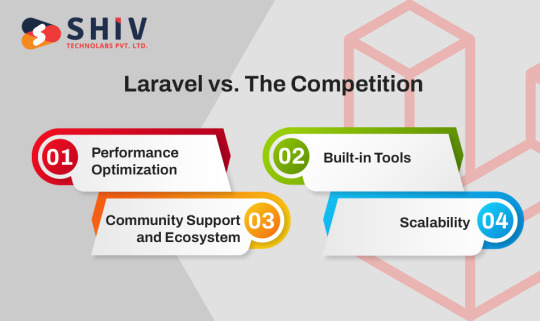
Performance Optimization
Laravel often outperforms its competitors due to built-in caching mechanisms and optimization tools, such as route caching, configuration caching, and view compilation. Unlike some frameworks like Zend, which may require manual optimization techniques, Laravel provides straightforward commands to boost performance, making it inherently faster and more efficient for complex applications.
Built-in Tools
Laravel comes with several pre-packaged tools such as Eloquent ORM, migration system, and seeding that are not as robust or even available in some other PHP frameworks like CodeIgniter. This suite of tools can significantly reduce development time and increase productivity by eliminating the need to write boilerplate code.
Community Support and Ecosystem
Laravel boasts a large, active community and a rich ecosystem, which includes comprehensive forums, extensive tutorials, video resources, and third-party packages. This is a contrast to smaller communities like that of Phalcon, where fewer resources and community support can limit problem-solving and learning opportunities.
Scalability
Laravel's ability to scale is comparable to that of any leading framework. It manages resources efficiently and can handle large-scale applications with ease. This stands in contrast to some PHP frameworks that might struggle under the weight of enterprise-level user loads or complex back-end operations.
Conclusion
Laravel continues to lead in the PHP framework domain due to its ease of use, comprehensive feature set, and robust community support. Whether it's the intuitive syntax or security features, Laravel provides a foundation that facilitates both simple and complex web application development.
Leveraging the expertise of a reliable Laravel development company like Shiv Technolabs, you can maximize the potential of Laravel to achieve your web development goals effectively and efficiently.
0 notes
Text
Laravel Artisan: The Command-Line Superpower for Your Applications
In the realm of web development, efficiency and productivity reign supreme. Developers are constantly seeking tools and workflows that streamline their processes, allowing them to focus on what truly matters: building exceptional applications. Laravel, the popular PHP framework, has long been revered for its intuitive syntax, extensive documentation, and robust feature set. However, one aspect that often goes overlooked is the mighty Laravel Artisan – a command-line interface (CLI) that empowers developers to perform a wide range of tasks with remarkable ease.

Whether you're a seasoned Laravel veteran or a newcomer to the framework, mastering Artisan can elevate your development experience to new heights. In this comprehensive guide, we'll explore the versatility of Laravel Artisan, unveiling its powerful capabilities and how it can revolutionize your application development workflow.
Understanding Laravel Artisan
Laravel Artisan is a command-line tool that serves as the backbone of Laravel's command-line interface. It provides a streamlined way to interact with your Laravel application, enabling you to execute a variety of tasks without the need for complex configurations or manual coding. Artisan is built upon the powerful Symfony Console component, which offers a robust and extensible foundation for creating command-line applications. Laravel leverages this component and adds its own set of commands tailored specifically for Laravel applications.
Getting Started with Laravel Artisan
Before delving into the depths of Artisan's capabilities, let's start with the basics. To access the Artisan command-line interface, navigate to your Laravel project directory and run a simple command in your terminal. This command will display a list of available Artisan commands, along with a brief description of each command's purpose. You can also use a specific flag to get more detailed information about a particular command.
Common Laravel Artisan Commands
Laravel Artisan comes packed with a vast array of commands out of the box. Here are some of the most commonly used commands that every Laravel developer should be familiar with:
1. Creating new controllers, models, and other classes:
Laravel Artisan provides a set of commands that allow you to quickly generate boilerplate code for various components of your application. These include controllers, models, middleware, events, jobs, and more. By leveraging these commands, you can save time and ensure consistency across your codebase, as the generated files follow Laravel's naming conventions and best practices.
2. Generating database migration files and executing migrations:
Migrations are a crucial aspect of Laravel's database management system. They allow you to define and apply schema changes to your database in a structured and version-controlled manner. Artisan offers commands to create new migration files, which contain instructions for modifying the database schema. Once these migration files are created, you can use another command to execute the migrations, applying the changes to your database.
3. Creating database seeders and populating the database with initial data:
Seeders are used to populate your database with initial data, such as default users, categories, or any other necessary records. Artisan provides commands to generate new seeder classes, which define the data to be inserted into the database. Once you've defined your seeders, you can use another command to execute them, inserting the specified data into your database tables.
4. Generating model factories and test cases for testing:
Testing is an essential part of modern software development, and Laravel offers robust testing tools out of the box. Artisan includes commands to generate model factories, which are classes that define how to create test data for your models. Additionally, you can generate test case classes, which contain the structure and setup required for writing and running tests for your application's components.
5. Starting the built-in PHP development server:
During development, Laravel includes a built-in PHP development server that allows you to serve your application locally without the need for a full-fledged web server setup. Artisan provides a command to start this development server, making it easy to preview and test your application in a local environment.
6. Displaying a list of all registered routes in your application:
Laravel's routing system is powerful and flexible, allowing you to define routes for various HTTP verbs and URLs. Artisan includes a command that displays a comprehensive list of all registered routes in your application, along with their corresponding methods, middleware, and other relevant information. This command is particularly useful for understanding and debugging your application's routing structure.
These common Laravel Artisan commands cover a wide range of tasks, from generating boilerplate code and managing database schema changes to facilitating testing and development workflows. By mastering these commands, you can significantly streamline your development process, save time, and ensure consistency across your Laravel applications.
It's important to note that while these examples provide an overview of the commands' functionalities, each command may have additional options and flags that can further customize its behavior. Developers are encouraged to refer to the official Laravel documentation or use the built-in help system (`php artisan command --help`) for more detailed information on each command's usage and available options.
Custom Artisan Commands
While Laravel provides a comprehensive set of built-in commands, the true power of Artisan lies in its extensibility. You can create custom Artisan commands tailored to your application's specific needs, automating repetitive tasks and streamlining your development workflow.
To create a custom Artisan command, you can use a specific Artisan command itself. This command will generate a new command class in a designated directory. Within this class, you can define the command's name, description, and the logic to be executed when the command is run.
For example, you could create a custom Artisan command that renames a database table. This command would accept two arguments: the current table name and the desired new table name. The command's logic would then perform the actual renaming operation using Laravel's Schema builder.
Once you've defined your custom command, you can register it in a specific file, allowing you to run your custom Artisan command from the terminal.
Artisan and Task Scheduling
In addition to executing one-off commands, Laravel Artisan also plays a crucial role in task scheduling. Laravel's built-in task scheduling system allows you to define recurring tasks, such as sending email reminders, generating reports, or performing database maintenance.
To define a scheduled task, you can create a new command and register it in a specific file's `schedule` method. For instance, you could schedule a command to send email reminders daily at a specific time. Laravel provides a rich set of scheduling options, allowing you to define tasks that run hourly, daily, weekly, or even on specific days and times.
Hire Dedicated Laravel Developers or a Laravel Development Company
While Laravel Artisan is a powerful tool, it's essential to have a team of skilled Laravel developers to fully leverage its capabilities. If you're looking to "hire dedicated Laravel developers" or partner with a "Laravel development company," it's crucial to choose a team with extensive experience in Laravel and a deep understanding of its ecosystem, including Artisan.
Experienced Laravel developers can not only harness the power of Artisan but also create custom commands tailored to your application's specific needs. They can streamline your development workflow, automate tedious tasks, and ensure your codebase adheres to best practices and standards.
Furthermore, a reputable "Laravel development company" can provide end-to-end solutions, from ideation and design to development, deployment, and ongoing maintenance. They can help you navigate the complexities of Laravel and Artisan, ensuring your application is built on a solid foundation and leverages the latest features and best practices.
Conclusion
Laravel Artisan is a command-line interface that empowers developers with an array of powerful tools and commands. From generating boilerplate code and managing database migrations to creating custom commands and scheduling tasks, Artisan is a true superpower for Laravel applications.
By mastering Artisan, you can streamline your development workflow, automate repetitive tasks, and enhance your productivity. Whether you're a solo developer or part of a team, incorporating Artisan into your Laravel development process can significantly improve your efficiency and deliver exceptional applications.
0 notes
Text
Full Stack
“Full Stack“ refers to the development of both the front-end (client-side) and back-end (server-side) of a web application. Top Skilled is the Best Full Stack Training in Pondicherry. In Top Skilled a full-stack developer who is proficient in working with both the “front end” and the “back end” of a web application, meaning they can handle tasks related to the user interface, user experience, and server-side logic.

FRONT-END (CLIENT-SIDE):
HTML/CSS: Creating the structure and styling of web pages. JavaScript: Programming the behavior and interactivity of web pages. Front-End Frameworks/Libraries: Knowledge of frameworks like React.js, Angular, or Vue.js for efficient UI development.
BACK-END (SERVER-SIDE):
Server-Side Programming Languages: Proficiency in languages like Node.js (JavaScript), Python, Ruby, Java, PHP, etc. Server-Side Frameworks: Familiarity with frameworks such as Express.js (Node.js), Django (Python), Ruby on Rails (Ruby), Laravel (PHP), etc. Database Management: Working with databases, including SQL databases (e.g., MySQL, PostgreSQL) and NoSQL databases (e.g., MongoDB). API (Application Programming Interface) Development: Creating APIs to facilitate communication between the front end and back end.
DATABASE MANAGEMENT:
Database Design: Creating and managing the structure of databases. Querying: Writing and optimizing database queries. ORMs/ODMs: Working with Object-Relational Mapping or Object-Document Mapping tools.
VIRSION CONTROL:
Git: Managing and collaborating on code using Git and platforms like GitHub or GitLab.
WEB DEVELOPMENT TOOLS AND PRACTICES:
Development Environments: Setting up and using development environments and tools. Package Managers: Using tools like npm or yarn to manage project dependencies. Command Line: Proficiency in the command line for tasks like scripting, automation, and project setup.
FRONT-END AND BACK-END INTEGRATION:
API Integration: Connecting front-end components with back-end services through APIs. Data Transfer Formats: Understanding and working with data formats like JSON.
DEVELOPMENT AND HOSTING:
Deployment Strategies: Deploying applications to servers or cloud platforms. Cloud Services: Familiarity with cloud services like AWS, Azure, or Heroku.
SECURITY:
Web Security: Understanding and implementing security best practices, including data encryption, authentication, and authorization.
TESTING:
Unit Testing: Writing and executing unit tests for code components. Integration Testing: Testing the interaction between different components.
SOFT SKILLS:
Communication: Effective communication within development teams and with stakeholders. Problem-Solving: Strong analytical and problem-solving skills.
Full-stack developers play a crucial role in the entire web development process, from designing the user interface to implementing server-side logic and ensuring the overall functionality and performance of the application. The Best IT Institute in Pondicherry is Top Skilled Academy they offer the best course for Full Stack Development. They are often involved in all stages of the development life cycle and are capable of taking on a variety of tasks within a project.
0 notes
Text
Crafting Digital Excellence: The Significance of Choosing a Laravel Web Development Company
In the realm of web development, Laravel stands out as a PHP framework renowned for its elegance, simplicity, and robust features. Leveraging the expertise of a dedicated Laravel Web Development Company can significantly impact the success of your digital ventures. In this blog post, we'll delve into the importance of Laravel in web development, the key features that make it a preferred choice, and why partnering with a professional Laravel Web Development Company is essential for crafting exceptional digital experiences.
The Power of Laravel in Web Development
Laravel has emerged as a leading PHP framework, empowering developers to create scalable, secure, and feature-rich web applications. Known for its expressive syntax and developer-friendly environment, Laravel has become the go-to choice for building websites and web applications that prioritize performance, maintainability, and innovation.
Key Features of Laravel
Eloquent ORM (Object-Relational Mapping): Laravel's ORM simplifies database interactions, allowing developers to work with databases using an elegant syntax and abstracting the underlying SQL queries.
Blade Templating Engine: Blade offers a clean, lightweight templating engine that simplifies the process of designing dynamic and engaging web pages, enhancing the overall front-end development experience.
Artisan Console: Laravel comes with a powerful command-line tool, Artisan, which automates various development tasks, streamlining processes like database migrations, testing, and code generation.
Middleware for HTTP Requests: Laravel's middleware feature allows developers to filter HTTP requests entering the application, enabling tasks such as authentication, logging, and more to be easily integrated.
Laravel Mix: Laravel Mix simplifies asset compilation and provides a clean, expressive API for defining webpack build steps, making front-end development more efficient.
The Role of Laravel Web Development Companies
Expertise and Experience: Professional Laravel Web Development Companies bring a wealth of expertise and experience to the table, ensuring that projects are executed with precision and adhere to industry best practices.
Custom Solutions: These companies specialize in creating custom solutions tailored to the specific needs and objectives of their clients, ensuring that the resulting web applications meet the highest standards of quality and performance.
Scalability: Laravel Web Development Companies design applications with scalability in mind, enabling businesses to grow and adapt their digital presence as their user base and requirements evolve.
Security Measures: Security is a top priority for Laravel Web Development Companies, and they implement industry-standard security measures to protect applications from potential threats and vulnerabilities.
Benefits of Choosing a Laravel Web Development Company
Efficient Development: Laravel's expressive syntax combined with the expertise of a dedicated development team results in efficient and timely project delivery, reducing time-to-market for web applications.
Scalable Solutions: Laravel Web Development Companies design applications that can scale seamlessly with growing business needs, ensuring that the web presence remains robust and responsive.
Future-Proofing: Laravel's commitment to backward compatibility ensures that applications developed today will remain compatible with future versions, providing a level of future-proofing for your digital investments.
Enhanced Performance: Leveraging Laravel's features for optimization, Laravel Web Development Companies create web applications that deliver high performance and responsiveness, providing an exceptional user experience.
In the competitive landscape of web development, choosing Laravel as your framework and collaborating with a proficient Laravel Web Development Company is a strategic decision. The synergy between Laravel's powerful features and the expertise of dedicated development teams ensures the creation of web applications that not only meet but exceed expectations. Whether you're building a corporate website, an e-commerce platform, or a dynamic web application, the choice of Laravel and a professional development partner sets the stage for digital excellence. Embrace the transformative power of Laravel Web Development to craft web experiences that are not just functional but exceptional in every aspect.
0 notes
Text
The Roadmap to Becoming an Ethical Hacker
Ethical hacking, also known as penetration testing or white hat hacking, is a crucial field in cybersecurity. Ethical hackers play a vital role in identifying vulnerabilities, securing systems, and protecting organizations from cyber threats.
As businesses started moving to online platforms for data storage, operations, and even sales, there is an increased concern about security. The intruders are always looking for a vulnerable network where they can peek in and turn their data theft intentions into a success.
For individuals seeking to validate their proficiency in Ethical Hacking and enhance their career prospects, pursuing Ethical Hacking institute in Bangalore becomes a strategic imperative.

If you aspire to become an ethical hacker, will provide you with a roadmap to guide your journey towards achieving your goal.
Here Is a Roadmap to Help You Embark on A Journey to Become an Ethical Hacker:
Develop a Strong Foundation in Computer Science and Networking:
Start by building a solid understanding of computer networks, operating systems, and programming languages like Python, C++, or Java.
Learn about network protocols, TCP/IP, subnetting, routing, and the functioning of network devices.
2. Gain Proficiency in Operating Systems and Security Concepts:
Familiarize yourself with different operating systems, such as Windows, Linux, and macOS. Learn their command-line interfaces, administrative tools, and security features.
Study cybersecurity concepts, including cryptography, network security, and secure coding practices.
3. Learn Web Application Security:
Understand the fundamentals of web technologies like HTML, CSS, JavaScript, and server-side scripting languages (e.g., PHP, ASP.NET).
Dive into web application security and learn about common vulnerabilities such as SQL injection, cross-site scripting (XSS), and security misconfigurations.
4. Study Penetration Testing Methodologies and Tools:
Gain knowledge of various penetration testing methodologies, such as the Open Web Application Security Project (OWASP) Testing Guide and the Penetration Testing Execution Standard (PTES).
Explore popular penetration testing tools like Burp Suite, Metasploit, Nmap, Wireshark, and SQLMap.
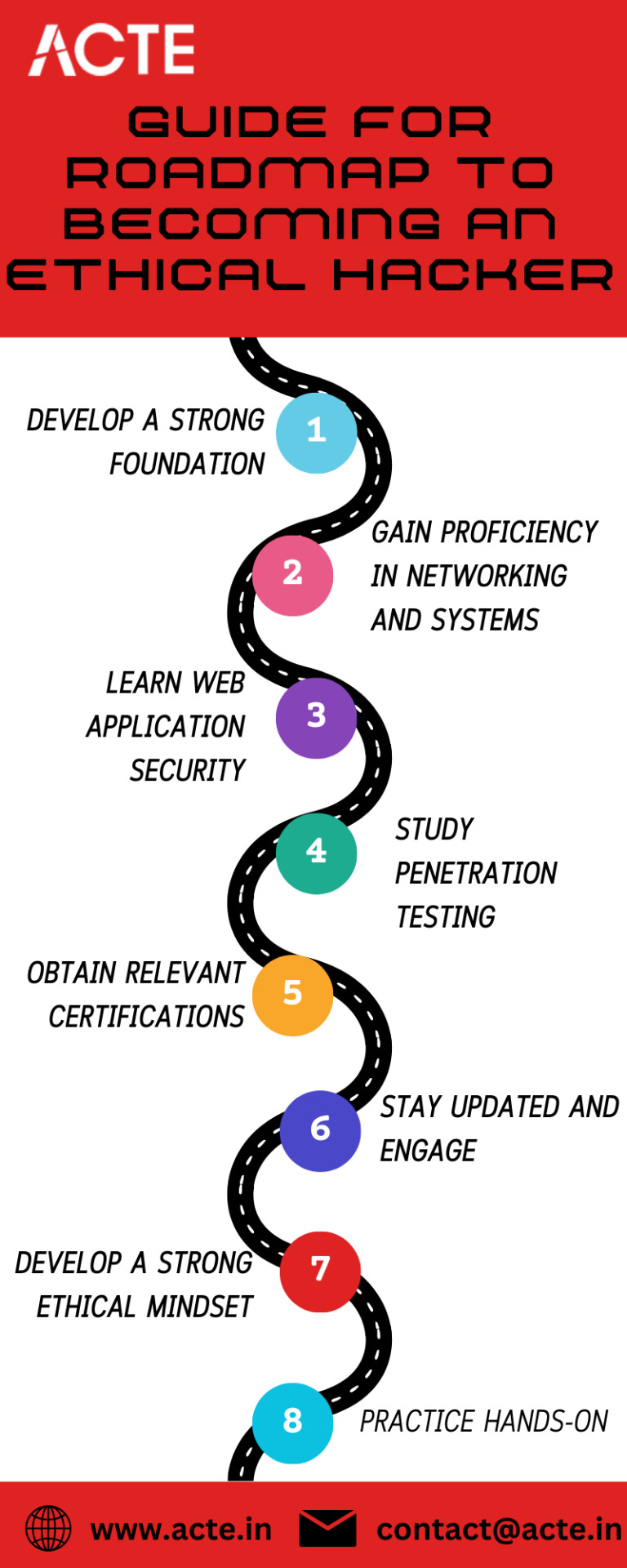
5. Pursue Relevant Certifications:
Consider obtaining industry-recognized certifications to validate your ethical hacking skills. Some notable certifications include Certified Ethical Hacker (CEH), Offensive Security Certified Professional (OSCP), and Certified Information Systems Security Professional (CISSP).
6. Engage in Hands-On Practice:
Set up a lab environment using virtualization software like VirtualBox or VMware to create virtual machines for testing purposes.
Practice ethical hacking techniques in a controlled and safe environment, ensuring you have proper authorization and permissions.
Participate in Capture The Flag (CTF) competitions and online hacking challenges to enhance your practical skills and problem-solving abilities.
7. Stay Updated with the Latest Trends and Vulnerabilities:
Follow cybersecurity blogs, forums, and news sources to stay abreast of the latest security vulnerabilities, emerging threats, and defense strategies.
Engage in continuous learning through online courses, webinars, workshops, and conferences to stay ahead in the ever-evolving field of cybersecurity.
8. Develop a Strong Ethical Mindset:
Understand and adhere to legal and ethical guidelines while performing ethical hacking activities.
Always obtain proper authorization and permissions before conducting any security assessments or penetration tests.
Respect privacy, confidentiality, and the integrity of the systems you are testing.
Becoming an ethical hacker requires a combination of technical knowledge, practical skills, and a strong ethical mindset. By following this roadmap, you can build a solid foundation in computer science and networking, specialize in web application security, gain expertise in penetration testing methodologies and tools, and stay updated with the latest trends.
Remember to approach ethical hacking with a strong ethical mindset, always ensuring you operate within legal boundaries and respect the privacy of individuals and organizations. With dedication, continuous learning, and practical experience, you can embark on a rewarding career as an ethical hacker and contribute to the security of digital systems.
Feel free to get in touch with an ACTE institution in Bangalore if you want to learn more about Ethical Hacking course because they provide certifications and possibilities for job placement. Teachers with experience can improve your learning. These services are available offline and online. Take things slowly and, if you’re interested, think about signing up for a course.
0 notes
Text
Web App Security: A Crucial Component in Your Business Strategy

Web App Security: A Crucial Component in Your Business Strategy
The stark reality facing organizations today is that security threats are ever-increasing, and expanding in complexity faster than ever before. From small-scale businesses to multinational firms, no entity is immune from potential cyber attacks. This crucial aspect can impact not only your business operations but also its reputation and customer trust. Web apps are especially exposed to third party manipulation, as they serve as an important tool for internal users and customers alike. So to highlight the relevance of making them as secure as possible, here’s an overview of why web app security should be high on your list of considerations when devising an optimized business strategy.
Why Web App Security is Essential
The necessity of web app security for your business cannot be stressed enough. It goes beyond protecting data — it’s about safeguarding the trust and confidence of your users. Here are just a few reasons why it's essential: Guard Your Reputation: A compromised system can result in leaked user data leading to grave loss of faith amongst clients or customers, so it should be part of your broader risk management strategy. Comply With Legal Requirements: Specific industries have strict regulations for data security. Ignoring these can lead to hefty fines or legal consequences. Defend Company Assets: Protect proprietary data, such as source code files from theft by competitor firms which enhances competition effectively. An ounce of prevention is worth a pound of cure. Taking proactive steps like staying updated on the latest cybersecurity threats, implementing robust protection measures, and educating your staff about best practices will go a long way towards improving your overall app security.
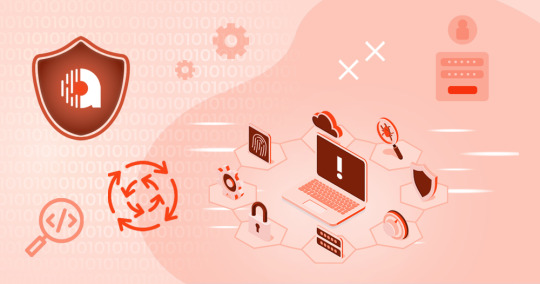
Identifying Potential Threats to Your App
In web app security, the first line of defense is accurate identification. You need to recognize what threats could compromise your app's safety. Here are a few examples: SQL Injection Attacks: These happen when an intruder manipulates your SQL query through insecure user input fields, accessing or manipulating sensitive data in the process. Cross-Site Scripting (XSS): This occurs when attackers inject malicious scripts into websites viewed by other users. Cross-Site Request Forgery (CSRF): In CSRF attacks, unsuspecting users get tricked into executing unauthorized commands intended for higher privileged accounts. Then there are more sophisticated methods such as Server Side Request Forgery and XML external entity injection among many others which you should also watch out for. The good news is that using an online PHP vulnerability scanner helps identify weaknesses that can serve as entry points for these cyber attackers. Such tools continually monitor your site, exposing any flagged vulnerabilities so they can be fixed proactively.
Effective Strategies for Enhancing App Safety
Protection is vital when it comes to handling threats. Here are some strategies that can significantly enhance your web app's safety: Regularly Updating Your Software: Routinely updates, including server operating system and any other software you utilize on your website, provide necessary patches that address known vulnerabilities. Using the HTTPS Protocol: Transferring data via HTTP renders the sensitive user information vulnerable during transit. HTTPS implementations add a layer of security by encrypting this data during transportation. Implementing Strong Password Policies: Encourage users to use complex passwords and change them regularly. This creates an extra level of protection against brute force attacks. Incorporating Firewalls: Web Application Firewalls (WAFs) work as filters or monitors which help defend against exploitations like SQL injection attacks or cross-site scripting. Differing levels of protective actions can be combined into several layers - analogous to a multi-tiered security net around your online business assets. Hence, utilizing an amalgamation of these measures offers greater assurance in defending against potential cyberattacks.
Dealing with Cyber Attacks in Business

Cyber attacks are an unfortunate reality for businesses, and can impact web apps as well as other digital assets, as discussed. But knowing how to respond effectively can minimize damage and speed recovery. Consider the following guidelines: Prompt Incident Reaction: Once an attack occurs, quickly identify what has been impacted. Accelerated responses can help you close loopholes. Data Preservation: Keep a backup of your data on a reputable cloud storage service, as it will support quick revivals after cyberattacks without significant losses. Communication Strategy: Inform impacted users honestly and promptly about any breaches. Transparency helps repair trust. Dealing with a breach involves more than mere technicalities; part of it is managing public relations too. By ensuring transparent engagement with all stakeholders during such crises, you’ll be able to regain trust, rather than watching it all drain away.
Wrapping Up
The short and sweet version of all this is that web app security remains a flagship consideration for companies across the world. Getting to grips with the potential threats, equipping your systems to defend against them and formulating a comprehensive crisis management strategy are all part of smarter business planning. As technology continues to evolve, always stay up-to-date with the latest security measures for protecting your online assets, as failure to do so could result in potentially catastrophic losses both financially and reputation-wise. And since malicious third parties are doing the same, you can’t be caught sleeping on this strategic issue. Read the full article
0 notes
Text
Mastering the Craft: Essential Skills for a 3-Year Experienced Full Stack Developer
Certainly! I’m excited to delve into the world of full-stack development with you. My expertise in this field has grown significantly over time. Selenium has emerged as a widely acknowledged and extensively utilized practice spanning various industries. Advance your career in Full-Stack Developer at a Top Institution in Chennai, like ACTE Technologies.

With three years of experience as a full-stack developer, it’s essential to possess a comprehensive skill set covering both front-end and back-end technologies, alongside key proficiencies.
Below Is A Skill Checklist Tailored For A Seasoned Professional:
1. Front-End Technologies:
Expertise in HTML5, CSS3, and JavaScript. Proven experience with front-end frameworks such as React, Angular, or Vue.js. Accomplished in responsive web design and ensuring cross-browser compatibility.
2. Back-End Technologies:
Mastery of at least one back-end programming language: JavaScript (Node.js), Python, Ruby, Java, or PHP. Command over a corresponding back-end framework (e.g., Express.js, Django, Ruby on Rails, Spring Boot, Laravel).
3. Databases:
In-depth knowledge of both relational databases (e.g., PostgreSQL, MySQL) and NoSQL databases (e.g., MongoDB). Proficient in database design, optimization, and query optimization.
4. APIs:
Expertise in designing, building, and consuming RESTful and/or GraphQL APIs. Understanding of intricate API authentication and authorization mechanisms.
5. Version Control:
Proficiency in version control systems, particularly Git.
6. DevOps and Deployment:
Practical experience with deployment tools like Docker. Understanding of continuous integration/continuous deployment (CI/CD) pipelines. Knowledgeable about cloud platforms such as AWS, Azure, or Google Cloud.
7. Testing:
Mastery of testing techniques and tools ensuring code reliability. Competence in executing unit testing, integration testing, and end-to-end testing.
8. Command Line and Unix:
Proficient in basic command line usage and Unix commands for streamlined development workflows.
9. Web Application Architecture:
Deep understanding of common web application architectures, encompassing client-server models and MVC/MVVM patterns.
10. Build Tools and Package Managers:
Familiarity with build tools (e.g., Webpack) and package managers (e.g., npm, yarn).
11. Web Security Practices:
Expertise in security best practices for web development, including authentication and authorization.
12. Soft Skills:
Strong communication and collaboration abilities within cross-functional teams. Exceptional problem-solving and critical-thinking skills.
13. Continuous Learning:
Commitment to staying updated with the latest technologies and frameworks.
14. Project Management:
Familiarity with project management methodologies and tools.
15. Leadership Skills:
Capability to mentor junior developers and lead development teams.

Remember, this list is a general guide, and the specific skills needed may vary based on the technologies in use and the unique requirements of your role and industry. Continuous learning and staying informed about industry trends remain pivotal for sustained career growth.
If you’re keen on exploring a Full-stack Developer course in Chennai, I highly recommend considering Top Institutions like ACTE Technologies. They provide certification programs and job placement opportunities, guided by experienced instructors to enhance your learning journey. These resources are available both online and in person. Enrolling in a course step by step could prove to be a valuable decision if it aligns with your interests.
I trust this addresses your query adequately. If you have more questions or need further clarification, please feel free to ask in the comments section.
If you’ve found this information valuable, I invite you to follow me on this platform and give it an upvote to encourage more discussions and insights about Full-stack Development. Your time and engagement are greatly appreciated, and I wish you a wonderful day ahead.
0 notes